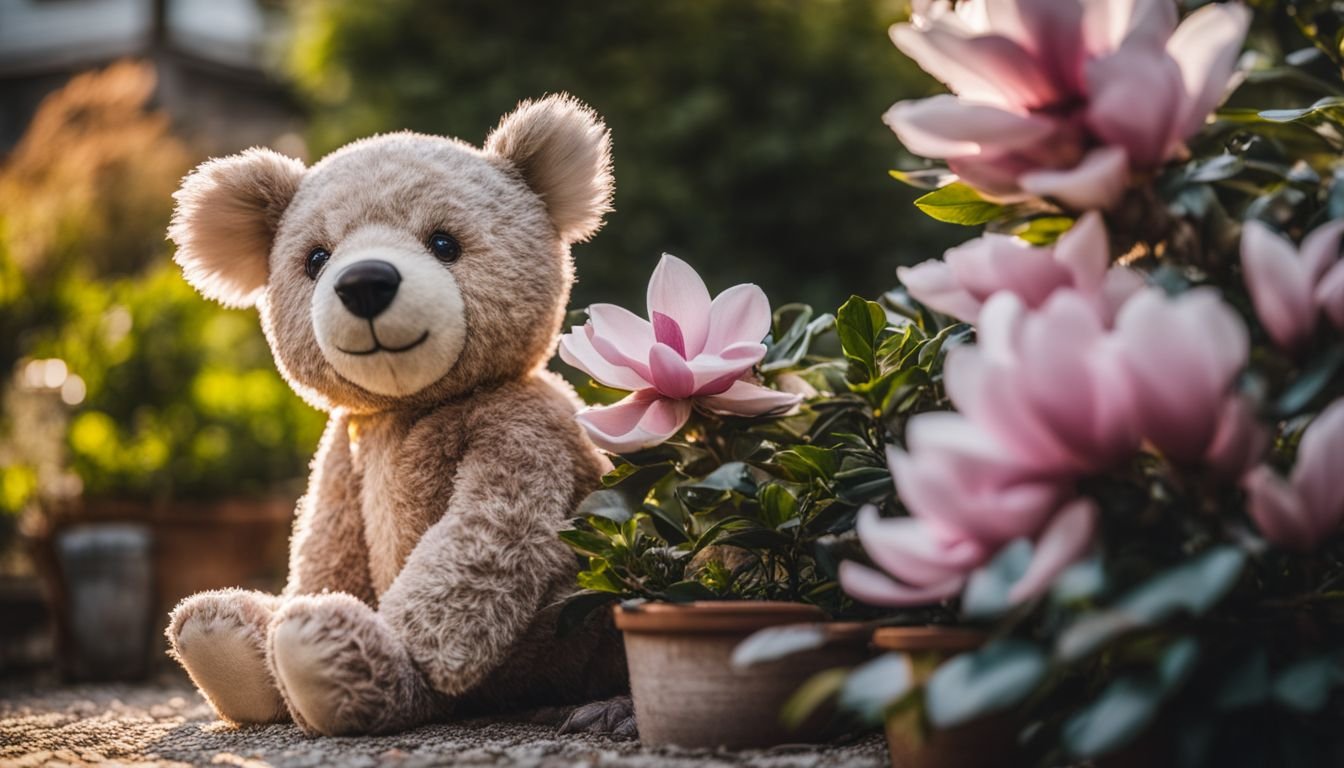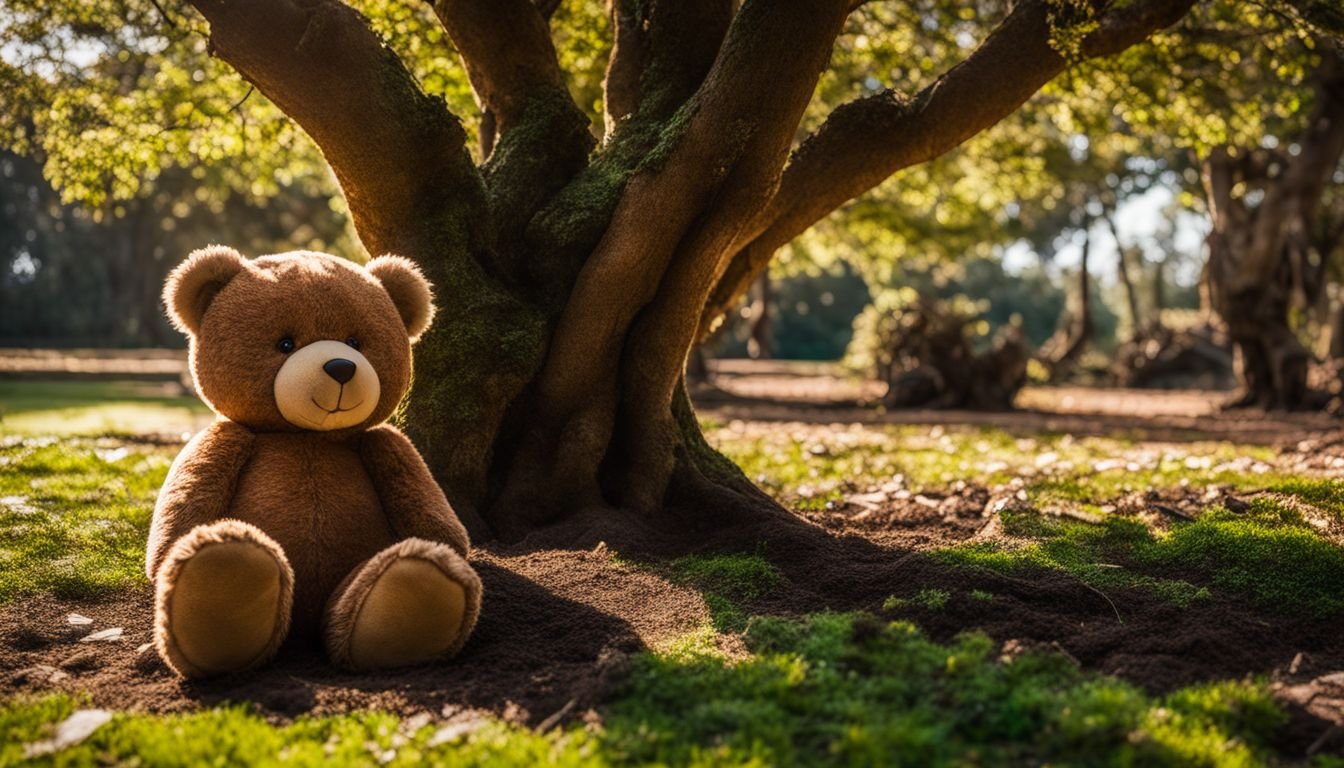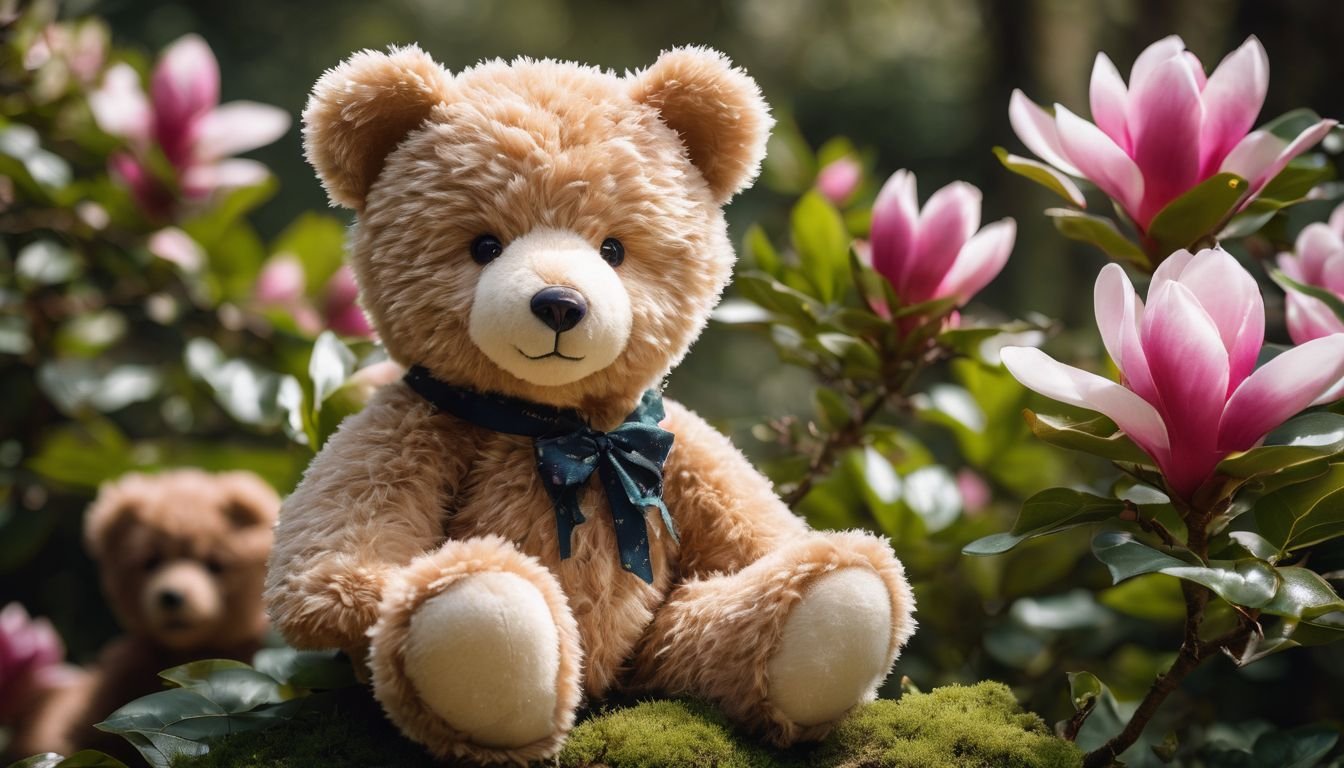Finding the perfect ornamental tree for your Australian garden can be a challenge. One hidden gem is the Teddy Bear Magnolia, a dense and compact evergreen with stunning fragrant flowers.
This blog post will guide you through nurturing these magnolias to flourish in your outdoor space, regardless of your gardening experience. Dive in to transform your garden into a blooming haven!
Key Takeaways
- Teddy Bear Magnolias need a balance of sunlight and partial shade, preferring morning sun and protection from the harsh afternoon rays. They flourish in well-drained soil enriched with organic matter, requiring deep watering once a week for stability.
- These magnolias are compact, offering bronze to deep green foliage and large white fragrant flowers that bloom against dense leaves. They serve as privacy screens or garden centrepieces due to their tight growth pattern without taking up too much space.
- Pruning is best done in late winter or early spring by removing dead branches and thinning overcrowded areas while maintaining the tree’s natural shape. Disease prevention includes selecting disease-resistant varieties like Teddy Bear Magnolias, recognised under Australia’s Plant Breeder’s Rights scheme.
- Through apps like Treefinder, gardeners can select trees suitable for Australian conditions that require minimal chemical treatments due to their natural disease resistance.
- To keep Teddy Bear Magnolias healthy and blooming stunningly throughout the year in Australia, it requires ongoing care such as mulching, regular check-ups for pests or diseases, occasional fertilising with balanced nutrients sparingly and ensuring adequate moisture levels especially during dry spells.
Understanding Teddy Bear Magnolias

The Teddy Bear Magnolia stands as a testament to the natural elegance within compact urban spaces, its lush foliage and intoxicating blooms inviting admiration. This evergreen variety entices gardeners with its unique charm, merging majesty and manageability in Australia’s diverse landscapes.
Compact and dense growth
Teddy Bear Magnolias stand out with their compact and dense growth pattern. This feature tree offers lush, polished green leaves that stay tightly knit, creating an attractive privacy screen or garden centrepiece without sprawling out of bounds.
Its tight form makes it perfect for smaller gardens where space is at a premium but beauty can’t be compromised.
Every Teddy Bear magnolia planted brings the promise of vibrant bronze foliage gracefully transitioning to deep green as seasons change. Busy city dwellers or those with cosy backyard spaces will find this magnolia grandiflora ‘teddy bear’ variety a hassle-free addition to their oasis, serving both ornamental and practical landscape purposes beautifully.
Bronze foliage and fragrant white flowers
As the seasons change, Teddy Bear Magnolias offer a visual feast with their unique bronze foliage that stands out amongst other ornamental trees. In its juvenile state, this attractive colouring serves as a dramatic backdrop for the contrasting soft, furry undersides of the leaves.
This evergreen magnolia doesn’t just win hearts with its richly-coloured leaves; it is also cherished for its large fragrant white flowers.
The heady scent of these blooms fills the air throughout their flowering period, creating an aromatic experience in any garden where they are planted. Picture these creamy-white blossoms as nature’s own perfumery, turning your garden into a sanctuary brimming with fragrance and colour.
Plant enthusiasts find great joy in watching these elegant flowers unfurl from velvety buds – each bloom serving as a stunning ornament against the dense green canvas of well-tended Teddy Bear Magnolia branches.
Ideal Conditions for Growing Teddy Bear Magnolias

For Teddy Bear Magnolias to thrive, providing the right environment is crucial. These magnificent plants demand specific conditions that cater to their distinctive needs for sunlight and soil quality, ensuring they grow robust and healthy in Australian gardens.
Sunlight requirements
Teddy Bear Magnolias thrive best with the right balance of light. They need enough sunshine to bloom beautifully but also benefit from partial shade during the hotter parts of the day.
Ideally, choose a spot that gets morning sunlight and is sheltered from the harsh afternoon rays. This part shade position will protect their glossy leaves from scorching while ensuring they still get the full sun experience needed for optimal growth.
Your magnolia teddy bear will show its appreciation for this careful positioning with robust bronze foliage and vibrant white flowers. Ensure you monitor how sunlight patterns change in your garden across different seasons to maintain that perfect blend of light exposure; it’s key to a healthy, happy plant.
Soil and watering needs
The Teddy Bear Magnolia thrives in humus-rich, well-drained soil that mimics its natural habitat. Choosing the right soil is crucial for this magnolia variety to flourish. Ensure your garden bed or potting mix has good drainage to prevent water logging, which can lead to root rot and other issues.
Incorporate organic matter like compost or aged manure into the planting site to improve soil structure and nutrient content.
Watering these magnolias properly is key to their growth. They require consistent moisture, especially during hot spells and when they’re young and establishing themselves. Provide deep watering once a week rather than shallow sprinkles every day; this encourages the roots to grow deeper into the ground, making them more resilient during dry periods.
Mulching around the base with organic material will help retain soil moisture and keep roots cool.
Comparison: Teddy Bear Magnolias vs Other Magnolia Varieties
Comparing Teddy Bear Magnolias with other varieties showcases their unique qualities and helps garden enthusiasts understand their distinct characteristics. Below is a table that provides a direct comparison between Teddy Bear Magnolias and other magnolia variants, underscoring features such as growth habit, foliage, environmental preferences, and floral attributes.
| Feature | Teddy Bear Magnolia | Other Magnolia Varieties |
|---|---|---|
| Growth Habit | Fastigiate, dense, compact growth | Varies, can be spreading or pyramidal |
| Foliage | Evergreen with bronze to deep green leaves | Both evergreen and deciduous, varied leaf colours |
| Environmental Preferences | Thrives in coastal areas, adaptable to various conditions | Different varieties suited to specific climates |
| Foliage Structure | Dense, compact with a plush appearance | May be more open, less dense |
| Flowers | Large, fragrant white blossoms | Varied colours and sizes, some less fragrant |
Each variety of magnolia has its charm, but Teddy Bear Magnolias offer a visually striking and fragrant addition to Australian gardens, making them a beloved choice among plant connoisseurs.
Caring for Teddy Bear Magnolias
To keep your Teddy Bear Magnolias thriving, a considered approach to their care is essential. Focusing on timely pruning and vigilant disease prevention will reward you with robust health and abundant blooms in these captivating plants.
Pruning and maintenance
Teddy Bear Magnolias stand out for their self-sustaining shape, needing less clipping than other trees. Regular trims keep these elegant plants healthy and enhance their natural beauty.
- Start pruning in late winter or early spring. This timing allows the tree to heal quickly without risking damage from cold weather.
- Focus on removing dead or damaged branches first. These can harbour diseases and pests, which might spread to healthy parts of the plant.
- Look for any branches that cross over others and those that grow inward towards the centre of the tree. Cutting these away will improve air circulation and light penetration.
- Make clean cuts at a 45 – degree angle, about a quarter inch above a bud facing the outside of the plant. This encourages outward growth and prevents water from accumulating on the cut surface, reducing disease risk.
- Use sharp pruning shears or loppers for smaller branches and a pruning saw for anything thicker than an inch. Blunt tools can cause unnecessary damage to the bark.
- Maintain a natural canopy shape by judiciously thinning overcrowded areas rather than topping or shearing. This preserves the magnolia’s characteristic form while promoting strong structure.
- After pruning, apply a layer of mulch around the base without touching the trunk to retain moisture and discourage weed growth.
- Keep an eye out for signs of disease or pest infestations regularly. Early detection means easier management and less drastic measures needed later on.
- Water young Teddy Bear Magnolias deeply but infrequently to encourage deep root growth; well – established trees are more drought tolerant.
- Fertilise sparingly with a balanced formula once a year in spring to support healthy development but avoid overfeeding, which can lead to excessive soft growth prone to pests and diseases.
Disease prevention
Disease prevention is key in maintaining the lush appearance and robust health of Teddy Bear Magnolias. Thanks to their disease-resistant qualities, these magnolias offer gardeners in Australia a leg up on keeping their gardens vibrant and healthy.
They’re protected under the Plant Breeder’s Rights scheme, further ensuring that new varieties remain resilient against common plant ailments. By choosing Teddy Bear Magnolias for your garden, you’re selecting a variety that stands up to diseases better than many others, cutting down on the need for chemical treatments and labor-intensive care.
Keeping your plants thriving involves more than just picking disease-resistant types like the southern magnolia or bull bay magnolia; it also means using resources wisely. Apps like Treefinder can help by providing information on over 400 tree varieties well-suited to Australian climates and conditions, including those with built-in disease resistance.
This tool empowers you as a gardener to make smart choices that promote natural disease prevention strategies right from the start—choices that are sustainable for your flora and easier on your workload too.
Conclusion
Embrace the charm of Teddy Bear Magnolias in your Aussie garden. With their lush foliage and stunning blooms, they add a touch of elegance to any space. Remember, these resilient trees thrive with some sunlight, proper soil, and a dash of tender care.
Make them a feature in your landscape for year-round beauty. Your efforts will be rewarded with an enchanting display that neighbours and passersby will admire.
Interested in how Teddy Bear Magnolias stack up against their close relative, the Little Gem? Click here to discover the differences between these two beautiful plants.
FAQs
1. What’s the best environment for Teddy Bear Magnolias in Australia?
Teddy Bear Magnolias thrive in well-drained soil with plenty of sunlight, much like their relative M. grandiflora, ensuring they grow lush and healthy.
2. Can I plant a Teddy Bear Magnolia close to my Japanese Maple?
Careful planning is crucial because Teddy Bear Magnolias need space for growth without interference from nearby trees such as Acer palmatum dissectum or Acer rubrum.
3. How often should I water my Teddy Bear Magnolia?
Water your Teddy Bear Magnolia regularly but don’t overdo it; just enough to keep the soil moist, mimicking the natural conditions this species prefers.
4. Do Teddy Bears require special care during Australian winters?
During cooler months, provide some protection against frost and reduce watering, but generally, these robust plants can withstand Australia’s winter climate quite well.
